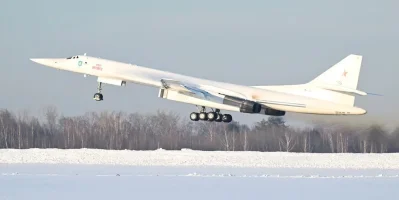- Views: 4K
- Replies: 20
India has significantly advanced its capabilities in developing long-range radar systems, achieving self-reliance in a field previously dominated by imports from European and other global suppliers.
This progress has reportedly positioned India not only as self-sufficient but also as a developer of radar technologies that, in certain aspects, rival or exceed those produced in Europe. This indigenous development places India in direct technological competition with China, potentially altering regional security dynamics.
European nations like France, the UK, and Sweden have historically been leaders in sophisticated radar technology, producing well-regarded systems such as the Thales Ground Master, Saab Giraffe, and BAE Systems ARTISAN radars. These systems, often employing Active Electronically Scanned Array (AESA) technology, have been benchmarks within NATO's defence framework. However, European radar development has largely focused on the specific requirements of a relatively stable European continent, emphasizing interoperability within existing defence structures rather than pioneering systems for diverse, high-threat environments.
Driven by the strategic necessity of addressing security challenges from both Pakistan and China – neighbours with advancing air and missile capabilities – India has pursued an ambitious indigenous radar development program. The Defence Research and Development Organisation (DRDO), particularly through its Electronics and Radar Development Establishment (LRDE), alongside industry partners, has spearheaded this effort under the "Make in India" initiative, leading to significant breakthroughs.
A key example of India's progress is the Swordfish Long Range Tracking Radar (LRTR), developed by DRDO and manufactured by Bharat Electronics Limited (BEL). This AESA radar forms a critical part of India's Ballistic Missile Defence (BMD) system, reportedly capable of tracking ballistic missiles beyond 1,500 km, with ongoing upgrades aimed at extending this range. Its precision tracking and fire control capabilities are considered highly advanced, particularly for intercepting high-speed ballistic threats – a capability refined through tests associated with India's missile program. This focus differs from many European systems primarily optimized for general air defence or maritime surveillance within the NATO context.
Furthermore, the development of the Virupaksha radar highlights India's technological advancements. This next-generation AESA system utilises Gallium Nitride (GaN)-based Transmit/Receive Modules, known for higher power efficiency and heat resistance compared to the Gallium Arsenide (GaAs) technology more common in older or some current European systems. This technology is expected to provide Virupaksha with enhanced resolution and detection range for air surveillance and early warning roles, potentially exceeding the performance of established platforms in specific parameters.
These advancements place India in a competitive position relative to China, which has also invested heavily in radar technology, including large systems like the Large Phased Array Radar (LPAR) capable of extensive surveillance ranges. While China's surveillance network has been a significant concern for India, particularly its monitoring capabilities over the Indian Ocean Region (IOR) and Indian missile test sites, India's indigenous developments signal a shift towards technological parity and strategic competition.
The induction of the Ashwini Low-Level Transportable Radar (LLTR) into the Indian Air Force (IAF), reportedly part of a significant deal with BEL initiated around 2025, underscores this trend. As a 4D AESA system with a reported range over 200 km, Ashwini is designed to detect low-flying targets, including drones and stealth aircraft, even in challenging electronic warfare conditions. This capability is seen as a direct response to threats posed by advanced aircraft and extensive radar networks along the Line of Actual Control (LAC). India's focus on countering such specific, proximate threats contrasts with the different strategic priorities shaping European radar development.
Another DRDO development, the High Power Radar (HPR), further illustrates India's focus. This static AESA system is designed for long-range surveillance (reportedly beyond 300 km) and tracking multiple targets simultaneously, including emerging hypersonic threats – an area where China has also made significant investments. India appears to be developing a layered defence network combining systems like HPR and Swordfish for both early warning and tactical response.
India's ambition to enhance its strategic surveillance capabilities is also reflected in the reported consideration of acquiring advanced radar technology, potentially like Russia's Voronezh system, known for its very long range. Such an acquisition, especially if involving significant local manufacturing as suggested, could grant India extensive monitoring reach across Asia and the IOR, rivalling China's own long-range assets. This pursuit of stand-alone, strategic-range systems contrasts with Europe's reliance on integrated, alliance-wide networks.
A distinguishing factor in India's success has been its emphasis on indigenous design, development, and manufacturing scalability through partnerships between public entities like DRDO and BEL, and private sector firms. This ecosystem has enabled the adaptation of core technologies across various platforms, exemplified by the Uttam AESA radar for fighter jets (like the Tejas) and the Revathi 3D radar for naval applications. This adaptability across domains offers flexibility potentially exceeding more compartmentalised European approaches.
Finally, the cost-effectiveness of India's domestically produced radar systems opens up potential export opportunities. Having already supplied systems like the Battlefield Surveillance Radar-Short Range (BFSR-SR) to other countries, India is positioning itself to compete in the global defence market, challenging traditional European suppliers in certain segments.

